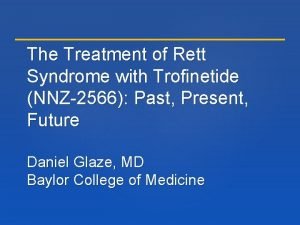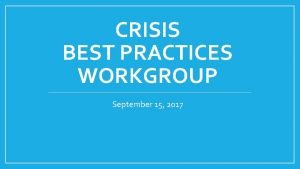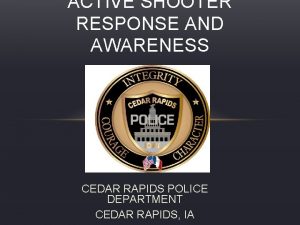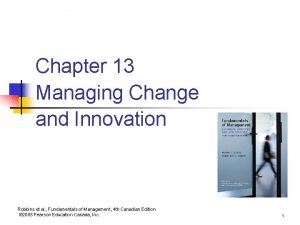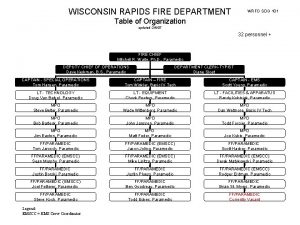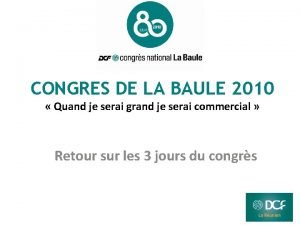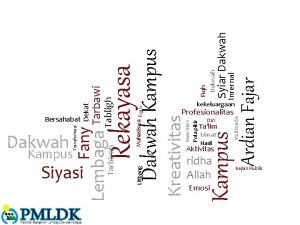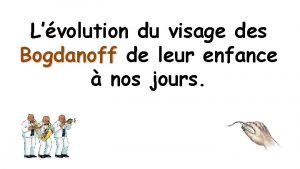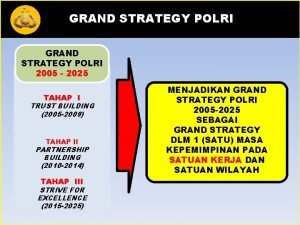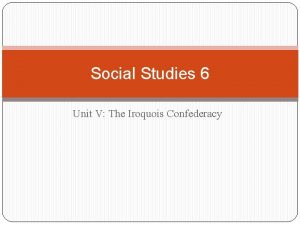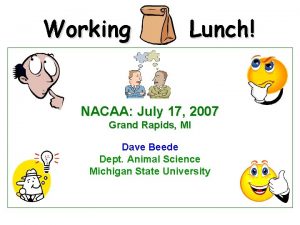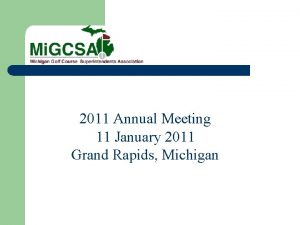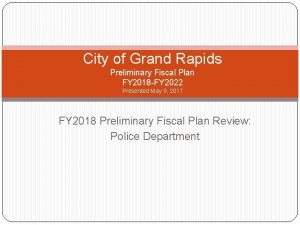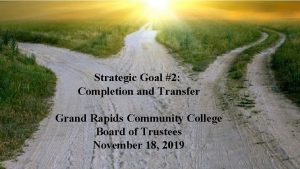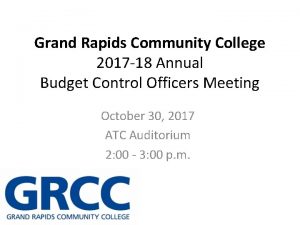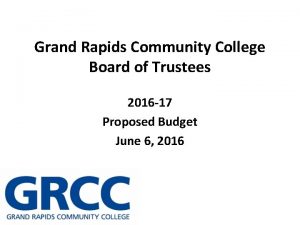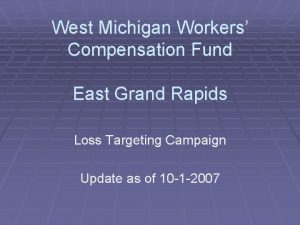2566 WOODMEADOW DR SE GRAND RAPIDS MI 49546










































- Slides: 42

2566 WOODMEADOW DR SE, GRAND RAPIDS MI 49546 WWW. ADOLESCENTFAMILYBHS. COM (616) 719 -0194

DIALECTICAL BEHAVIOR THERAPY (DBT) PROGRAM ORIENTATION

https: //youtu. be/Stz--d 17 ID 4 Watch video: What is Dialectical Behavior Therapy (DBT) for Adolescents

WHAT DOES DIALECTICAL MEAN? DIALECTICS ARE ONE OF THE IMPORTANT UNIFYING CONCEPTS THAT REFLECT HOW THE MIND FUNDAMENTALLY UNDERSTANDS AND PERCEIVES MOST CORE CONCEPTS AND IDEAS.

EXAMPLES OF OPPOSITE EXTREMES ONE EXTREME THE OTHER EXTREME 1. The more you rebel against others (parents, etc…) 1. The more you will allow them to control you 2. The more you argue for your position 2. The less you will be heard 3. The more you must have someone 3. The less they’ll end up wanting you 4. People overly dependent on others 4. 5. People who tend to throw blame at others —who feel blameworthy Those driven to be independent fail to obtain help when needed 5. Fail to accept appropriate blame


RESEARCH ABOUT DBT • Dialectical Behavior Therapy (DBT) is officially recognized by the Cochrane Review (Stouffer et al. (2012)) as the treatment of choice for characteristics associated with borderline personality disorder (BPD) including impulsivity, interpersonal problems, emotional dysregulation, self-harm, and suicidal behaviors. • The American Psychological Association’s Society of Clinical Psychology considers DBT to be the only current treatment for BPD that has Level I (highest level) strong evidence for its use (APA Division 12, 2012) • DBT is currently the only therapy, apart from psychoeducational multifamily groups, listed as an evidence-based practice for BPD in the U. S. Substance Abuse and Mental Health Service Administration’s (SAMHSA) National Registry of Evidence-Based Programs and Practices report to the US Congress (SAMHSA, 2011). o The SAMHSA report states, “DBT has a large empirical base compared with other treatments and is largely considered one of the best, if not the best, treatments for BPD” (SAMHSA, 2011).

RESEARCH ABOUT DBT CONTINUED • Clients in 12 month DBT used 30. 4 hospital days/client less than TAU, and these reductions in hospital days were maintained and improved upon at one-year follow up (Linehan et al, 1993)). • DBT outperformed the comparator treatment (12 step + comprehensive validation) of people with BPD and opioid dependence, with one person admitted to hospital during the 12 months of treatment but with no data reported on pre-treatment hospitalization. Mean number of nights in jail was 7. 7 for the DBT clients and 18. 8 for comparison clients. (Linehan et al (2002)). • DBT outperformed treatment by experts on most measures. In the year of treatment, statistically fewer DBT clients than treatment by experts’ clients were admitted to a psychiatric hospital (19. 6% vs 48. 9%) or admitted to a psychiatric hospital for suicide ideation (9. 8% vs 35. 6%). There were essentially no differences in admission percentages in the 12 months post treatment. Hospital days and pre-post comparisons not reported. (Linehan et al (2006)).

DBT AND EATING DISORDERS- DIALECTICAL BEHAVIORAL THERAPY FOR EATING DISORDERS — THERAPEUTIC TOOL OF ACCEPTANCE AND CHANGE • “studies have found that DBT may help individuals with bulimia and binge-eating disorders, it may in some ways be helpful to those with anorexia as well” • “the therapy translates more easily to people with eating disorders who are struggling with impulsive behaviors like bingeing and purging, whereas those with anorexia are struggling with being rigid and controlling their food and their emotions” • “A dialectic means two seemingly opposite ideas can be true at the same time. Many patients struggle with black-and-white or all-or-nothing thinking. An example would be, ‘Since I binged and purged today, I am a total failure in life. ’ Looking at that same circumstance from a dialectical perspective would be, ‘I binged and purged today, and I am continuing to work on my recovery. ” Diane Hilleary, LCSW, clinical coordinator of women’s services at Ridgeview Institute

SUCCESS STATS • Parasuicidal patients with BPD: Through the first six months of the 12 -month followup period, DBT patients demonstrated less parasuicidal behavior and anger and better social adjustment. Findings regarding better social adjustment persisted throughout the final six months of the follow-up period, and DBT patients also had fewer inpatient psychiatric days during this period. DBT patients had greater reductions in suicide attempts, psychiatric hospitalization, medical risk of parasuicidal behavior, angry behavior, and emergency room visits, compared with TBCE patients across the 12 -month treatment and the 12 -month follow-up period. • a study of women veterans with BPD found that DBT patients had greater reductions in suicidal ideation, hopelessness, depression, and anger experienced than did TAU patients. Follow-up data for these two studies are not available.

SUCCESS STATS • Women with BPD and substance use disorders: DBT patients showed greater reductions in drug use during the 12 -month treatment and through the four-month follow up period and had lower drop out rates during treatment. For a second study conducted by Linehan's group, opiate-dependent women with BPD were randomly assigned to two conditions: DBT or a rigorous control condition, called Comprehensive Validation Treatment with 12 -step (CVT-12 S). CVT-12 S consisted of a stripped down version of DBT that only involved acceptance-oriented interventions designed to control for time of access to treatment, academic treatment setting, and therapist experience and commitment. Participants in both DBT and CVT-12 S showed significant reduction in opiate use during the 12 -month treatment, but DBT patients had greater sustained abstinence from opiate use at the 16 -month follow-up.

SUCCESS STATS • Other clinical populations and problems: Additionally, some research has examined DBT-oriented treatments for other clinical problems, including eating disorders and depression in elderly patients. Telch and colleagues compared a 20 -week DBT-based skills training group to a wait list control condition for women with binge-eating disorder and found that DBT patients had greater improvements in bingeing, body image, eating concerns, and anger. Although 86 percent of DBT participants had stopped bingeing by the end of treatment, this number declined to 56 percent during the six-month follow-up period. A second study compared a modified version of individual DBT that included skills training to a wait list condition. DBT patients had greater reductions in bingeing and purging. No follow -up data are currently available for this latter study.

SUICIDE AND SELF INJURY DECREASED STATS RESEARCH ON DIALECTICAL BEHAVIOR THERAPY Compiled by Marsha M. Linehan, Ph. D. , ABPP, Linda Dimeff, Ph. D. , Kelly Koerner, Ph. D. , & Erin M. Miga, Ph. D http: //behavioraltech. org/downloads/research-on-dbt_summary-of-data-to-date. pdf

WEBSITES/RESEARCH ABOUT DBT http: //behavioraltech. org/downloads/Research-on-DBT_Summary-of-Data-to. Date. pdf http: //www. linehaninstitute. org/downloads/Latest. Research/2017. 01. pdf http: //www. linehaninstitute. org/downloads/RCT 4 Modes. Research. Datato. Date 2016. 0 6. 28. pdf

PARENTAL QUESTIONS • Why is Parent Group a requirement for my teen’s therapy? In DBT treatment for teenagers, individual clients and their families need support and skills. The parent group helps parents increase their own DBT skills to manage their child’s behavior and learn the skills that the teen is learning in order to support them practice. The group complements their own learning with DBT parenting strategies to increase parental effectiveness and decrease the sense of “burnout” from parenting a teenager with high emotional sensitivity. In order for real change to occur, both the individual and the environment need to change their patterns of responding. With teens it is imperative for families to help support and shape the change. Research from NEA of BPD about family connections (borderlinepersonalitydisorder. com) found family members of clients with BPD have higher depression than those of family members with schizophrenia.

PARENTAL QUESTIONS CONTINUED • As a parent/caregiver, can I know what you talk about in sessions with my child/teenager? In Adolescent DBT, we ask that parents/caregivers observe rules of confidentiality by not asking us to provide specific information learned in individual sessions. You, however, are welcome to provide us with information about your child/teenager. Confidentiality will be broken, as by law, if your son/daughter is at imminent risk to himself/herself or others, or reports feeling threatened, so that his/her safety or the safety of others is maintained.

FAMILY CONNECTIONS: NEA-BPD • BPD Affects The Whole Family • Families of people with BPD may benefit from support, skills training and sometimes their own therapy • Family Connections is coordinated by the National Education Alliance for Borderline Personality Disorder (NEA. BPD) and is based on research funded by the National Institute of Mental Health. It reflects a decade of professionally led Dialectical Behavior Therapy (DBT) family groups that are community based and led by trained family members. • Survey data from previous courses show that after completing the course, family members experience decreased feelings of depression, burden, and grief, and more feelings of empowerment.

Main Components INDIVIDUAL WEEKLY PSYCHOTHERAPY SESSIONS: CONCENTRATE ON PROBLEM-SOLVING BEHAVIOR FOR THE PAST WEEK’S ISSUES AND TROUBLES. SELF INJURY AND SUICIDAL BEHAVIORS TAKE FIRST PRIORITY. WEEKLY SKILLS GROUP THERAPY SESSIONS: GENERALLY 1 ½ HOUR A SESSION AND LED BY A TRAINED DBT THERAPIST. PEOPLE LEARN SKILLS FROM ONE OF FOUR DIFFERENT MODULES. WEEKLY FAMILY MATTERS GROUP THERAPY SESSIONS 12 WEEKS

MAIN COMPONENTS CONTINUED SKILLS COACHING THE GROUP IS RUN LIKE A CLASS WHERE THE GROUP LEADER TEACHES THE SKILLS AND ASSIGNS HOMEWORK FOR CLIENTS TO PRACTICE USING THE SKILLS IN THEIR EVERYDAY LIVES. GROUPS MEET ON A WEEKLY BASIS FOR APPROXIMATELY 2. 5 HOURS AND IT TAKES 24 WEEKS TO GET THROUGH THE FULL SKILLS CURRICULUM, WHICH IS OFTEN REPEATED TO CREATE A 1 -YEAR PROGRAM. WEEKLY TEAM CONSULTATION INTENDED TO BE THERAPY FOR THERAPISTS AND TO SUPPORT DBT PROVIDERS IN THEIR WORK WITH PEOPLE WHO OFTEN HAVE SEVERE, COMPLEX, DIFFICULT-TO-TREAT DISORDERS. THE CONSULTATION TEAM IS DESIGNED TO HELP THERAPISTS STAY MOTIVATED AND COMPETENT SO THEY CAN PROVIDE THE BEST TREATMENT POSSIBLE.

SKILLS MODULES Interpersonal Effectiveness Distress Tolerance/Reality Acceptance skills Emotion Regulation Mindfulness skills Walking the Middle Path (For Adolescents)


AREAS ADDRESSED IN THE MODULES HANDOUT #1 • Confusion about self. • Impulsivity (acting without thinking it all through) • Emotional instability (fast, intense mood changes with little control). • Interpersonal problems (pattern of difficulty getting along with others and maintaining relationships). • Adolescent and family dilemmas.

MINDFULNESS • To Observe, Describe, and Participate are “what” skills. • Non-judgmentally, One-mindfully, and Effectively are “how” skills.

INTERPERSONAL EFFECTIVENESS • Effective strategies for what one needs, saying “no”, and coping with interpersonal conflict. • Borderline individuals possess good interpersonal skills in general. The problems arise in applying these skills to specific situations. • While the individual may be able to describe their behavior, they may be completely incapable of generating similar behavioral sequences when analyzing their own situation. • It focuses on the objective to change something. Skills are taught to maximize the chances that a person’s goals in a specific situation will be met, while at the same time not damaging the relationship or the person’s self-respect.

DISTRESS TOLERANCE • The ability to accept, in a non-judgmental fashion, oneself and the current situation. • Acceptance of reality is not approval of reality. • It is concerned with tolerating and surviving crises and accepting life as it is in the moment. • The four sets of crisis survival strategies that are taught are: distracting, self-soothing, improving the moment, and thinking of pros and cons. • Radical acceptance, turning the mind towards acceptance, and willingness versus willfulness are all acceptance skills DBT teaches.

EMOTION REGULATION • DBT skills for emotion regulation: • Identifying and labeling emotions • Identifying obstacles to changing emotions • Reducing vulnerability to “emotional mind” • Increasing positive emotional events • Increasing mindfulness to current emotions • Taking opposite action • Applying distress tolerance techniques

WALKING THE MIDDLE PATH (FOR ADOLESCENTS) • DBT skills for Walking the Middle Path: • Added for families and teens • Focuses on learning there is more than one way to see a situation or solve a problem • Balancing acceptance and change • Changing painful or difficult thoughts, feelings, or circumstances • Accepting themselves, others, and circumstances in the moment

BIOSOCIAL THEORY – HANDOUT #5 • Emotional Vulnerability • Hypersensitive to emotional stimuli • Emotional sensitivity • Emotional reactivity • Slow to return to baseline • Inability to Modulate Emotions • Transacting with Invalidating Environment • Personal experiences (thoughts, feelings, actions) are not understood by others. Why are you over-reacting? What is the big deal? Calm down. • Possibly different temperament than caretaker • Decrease/increase physiological arousal associated with emotions • Extreme invalidation can be extreme including physical or sexual abuse. • Re-orient attention • Invalidation can lead to confusion about self. • Inhibit modd-dependent action • Judgements become impaired. • Organize behavior in the service of external, non-mood dependent goals

GUIDELINES FOR SKILLS TRAINING HANDOUT #3 • Attendance, Tardiness, Absences & Holidays • (parents need to attend every single week with child, even adolescents) • Substance Abuse & Self Injury • Participation • Confidentiality • Homework – diary cards, etc. • Forming Outside Relationships • Outside Individual Therapy • Phone Coaching Guidelines (available only if individual therapist is at AFBHS)

PHONE COACHING • Guidelines – 24 hr Rule • Self Pay after 10 mins

TREATMENT TOOLS Participants expected to purchase workbook Men. Women. Adolescents. Tweens (Amazon, bookstore, or older version of worksheets from office) Diary Cards Assessments (Caregiver Burden Inventory, Wellness Check, Satisfaction Surveys, Etc. )

CHARACTERISTICS OF DBT • Support Oriented: It helps a person identify their strengths and builds on them so the person can feel better about him/herself and their life. • Cognitive-based: DBT helps identify thoughts, beliefs, and assumptions that make life harder. It helps people learn different ways of thinking that will make life more bearable. (Ex: “I have to be perfect at everything”, “If I get angry, I’m a terrible person”, “I don’t need to be perfect at things for people to care about me”. ) • Collaborative: In DBT people are encouraged to work out problems in their relationships with their therapists. It askes people to complete homework assignments, to role-play new ways of interacting with others, and to practice skills such as soothing yourself when upset. These skills are a crucial part of DBT, are taught in weekly lectures, reviewed in homework groups, and referred to in nearly every group. Individual therapists help the person to learn, apply and master the DBT skills.

• Clients are doing the best they can. • Clients want to improve. • Clients need to do better, try harder, and be more motivated to change. • Clients have not caused all of their own problems, but they have to solve them anyway. DBT BELIEFS Handout #4 • The lives of suicidal and depressed clients are painful as they are currently being lived. • Clients must learn new behaviors in all-important situations in their lives. • There is no absolute truth. • Clients and their families should take things in a well meaning way rather than assuming the worst. • Clients cannot fail.


Whether you have a mental illness or not, you can absolutely benefit from learning these skills and incorporating them into your life. DBT skills can help you effectively manage your emotions and lead a healthier and happier life.

COMPLETE INTAKE PAPERWORK • Everyone complete handouts • Adults, Adolescents/Tweens, Parents/Caregivers • Group Contracts (scanning once all signatures obtained) • DBT Contract • Family Matters Contract • Outside Therapist • Outside Therapist Form must be returned by individual therapist • Release of Information for individual therapist • Outside therapist does coaching calls • Caregiver Burden Inventory (Give to VA), TOP Assessment (Wellness Check) – Intern will enter data • Goals of Skills Training (Give to group therapist) • Guidelines for Adolescents (Give to group therapist) • Pros and Cons (client keeps)

HOW LONG WILL I BE IN THE DBT PROGRAM • KIDS DBT GROUP IS A 12 WEEK PROGRAM • FAMILY MATTERS GROUP IS A 12 WEEK PROGRAM) *Parents are required to attend 12 consecutive weeks of group at the start of the program and have the option of attending additional weeks. • TWEEN DBT GROUP IS A 16 WEEK PROGRAM • ADOLESCENT DBT GROUP IS A 24 WEEK PROGRAM • BOTH THE WOMEN’S AND THE MEN’S DBT GROUPS ARE 24 WEEK PROGRAMS • Coming soon: Substance Abuse DBT Group, Eating Disorder DBT Group, Young Adult DBT Group, , Graduate DBT Group, and High Conflict Couples DBT Group *All of these programs require a signed contract in order for the DBT program to work at its best. The signing of the contract signifies commitment to treatment. Individuals are required to have weekly individual counseling sessions with their therapists.

HOW MANY ROUNDS OF SKILLS GROUP WILL I NEED TO COMPLETE • Most people find it beneficial to attend two rounds of Skills Training Group • The DBT Program is 1 year. Individual therapy does not end when skills group ends. • Each member is eligible to join a Graduate Group. • Reinforcement of DBT skills and more in depth interaction about application of skills

COMMITMENT • College Class Example • Investment in Yourself • Completing Diary Cards Weekly

REFERENCES: • http: //www. dbtnj. org/adolescent_dbt_questions. htm • http: //www. linehaninstitute. org/research/data-to-date. php • http: //behavioraltech. org/downloads/Research-on-DBT_Summary-of-Data-to. Date. pdf • http: //www. linehaninstitute. org/downloads/Latest. Research/2017. 01. pdf • http: //www. linehaninstitute. org/downloads/RCT 4 Modes. Research. Datato. Date 2016. 06. 28. pdf • https: //psychcentral. com/lib/an-overview-of-dialectical-behavior-therapy/? all=1

REFERENCES CONTINUED • http: //www. borderlinepersonalitydisorder. com/family-connections/ • http: //www. socialworktoday. com/archive/111113 p 22. shtml

2566 WOODMEADOW DR SE, GRAND RAPIDS MI 49546 DIALECTICAL BEHAVIOR THERAPY (DBT) PROGRAM ORIENTATION
 Nnz-2566
Nnz-2566 Pivot crisis grand rapids mi
Pivot crisis grand rapids mi Dbt therapy grand rapids
Dbt therapy grand rapids Grand rapids vet center
Grand rapids vet center Lions club grand rapids
Lions club grand rapids Cataract rocky rapids
Cataract rocky rapids Cedar rapids active shooter
Cedar rapids active shooter Dalton wild cedar rapids iowa
Dalton wild cedar rapids iowa Sacred heart church sauk rapids mn
Sacred heart church sauk rapids mn Chapter 13 managing change and innovation
Chapter 13 managing change and innovation Wisconsin rapids fire department
Wisconsin rapids fire department A section of the nile river with rapids and rocky terrain
A section of the nile river with rapids and rocky terrain Quand je serai grand je serai commercial
Quand je serai grand je serai commercial Grand corps malade te manquer
Grand corps malade te manquer Grand nationalresults
Grand nationalresults Contoh grand design kepanitiaan
Contoh grand design kepanitiaan Speciation ecureuil antilope
Speciation ecureuil antilope Master choa kok sui son
Master choa kok sui son Esophgeal varices
Esophgeal varices Texte ne pleure pas devant ma tombe
Texte ne pleure pas devant ma tombe Grand canyon diploma
Grand canyon diploma Freres bogdanov evolution
Freres bogdanov evolution Grand union flag
Grand union flag Kahoot it
Kahoot it Grand strategi polri
Grand strategi polri The correct mixture of mirepoix is
The correct mixture of mirepoix is Grand council iroquois
Grand council iroquois Gpisd menu
Gpisd menu Mcdonald's case study strategic management
Mcdonald's case study strategic management Grandnordauto
Grandnordauto Haribo c'est beau la vie pour les grand et les petit
Haribo c'est beau la vie pour les grand et les petit Tancor grand cru
Tancor grand cru Grand solutions international
Grand solutions international Qui m'embrasse le matin me fait plein de calins
Qui m'embrasse le matin me fait plein de calins Grand alliance breakdown
Grand alliance breakdown Grand strategy matrix
Grand strategy matrix Grand firs hoa
Grand firs hoa The sun kings grand style
The sun kings grand style La grand jaune dans seraphin
La grand jaune dans seraphin Grand forks personals
Grand forks personals Sanford marketing
Sanford marketing Ensemble n
Ensemble n Grand tour mappa concettuale
Grand tour mappa concettuale
